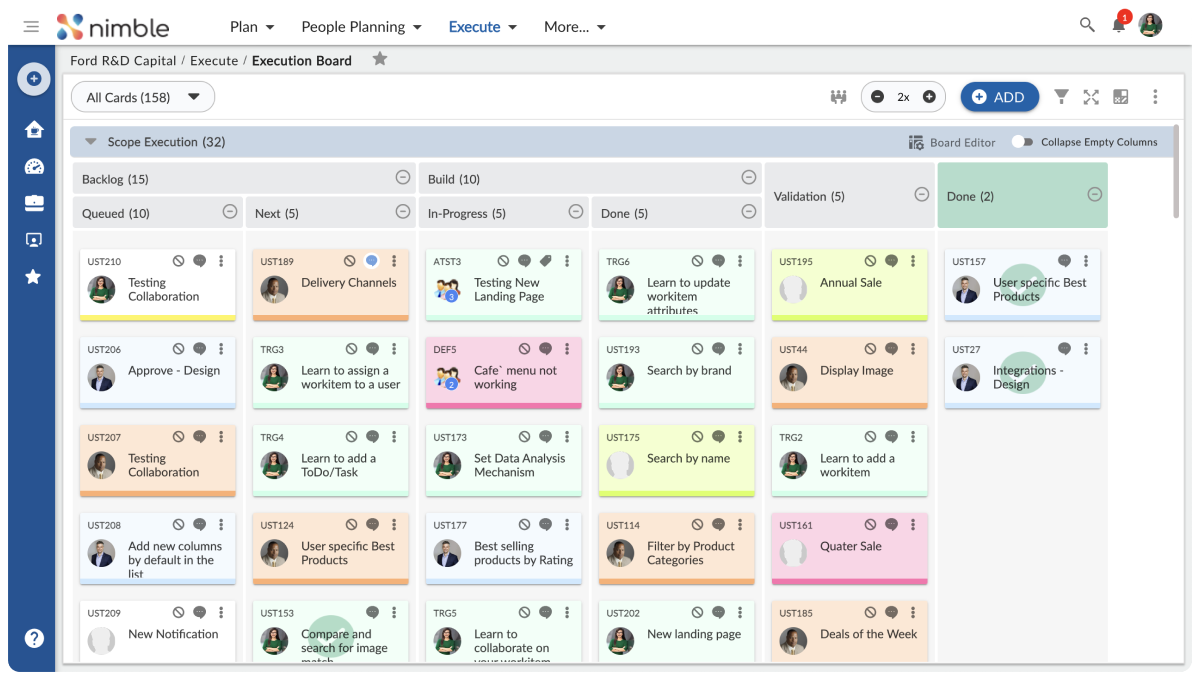Have you ever wondered why some teams consistently deliver results while others struggle to meet deadlines? The answer often lies in their approach to project management. Whether you’re part of a Fortune 500 company or a nimble startup, the value of structured project management is frequently overlooked. Yet, as organizations expand and tasks grow more intricate, the absence of effective project coordination becomes glaringly apparent.
Project management skills are beneficial for any team looking to improve efficiency and streamline workflows. At NimbleWork, we believe that effective project management is essential for teams to plan, manage, and execute work successfully.
Its benefits are multifaceted, addressing several critical aspects of project execution and management. This article delves into the primary advantages of project management software, highlighting how it enhances team collaboration, improves project visibility, streamlines task management, optimizes resources, tracks time and budget, facilitates data-driven decisions, ensures compliance, offers customization, supports mobile accessibility, ensures security, leverages automation and AI, and ultimately, delivers a solid return on investment.
The Importance of Choosing the Right Software
Selecting the appropriate project management software is crucial for its successful implementation and long-term usefulness. The right choice can significantly impact user adoption rates and overall project outcomes.
1. Matching Features to Specific Project Needs
Selecting PMS that aligns with the specific needs of a project is crucial. This means evaluating the software’s features against project requirements and ensuring it provides the necessary tools without unnecessary complexity.
2. Scalability Considerations
The chosen PMS should be scalable to accommodate the growth of the project or organization. It should support an increasing number of users, projects, and data without compromising performance.
3. User-Friendliness and Adoption Rates
User-friendliness is critical to ensure high adoption rates. The software should have an intuitive interface and easy-to-use features that encourage team members to utilize it effectively.

Improving Project Visibility and Transparency
1. Comprehensive Project Dashboards
Dashboards that provide an overview of project status, key metrics, and progress help stakeholders and team members understand the current state of the project at a glance.
2. Stakeholder Reporting and Updates
Regular reporting and updates to stakeholders are essential for maintaining transparency and trust. PMS should offer robust reporting tools that simplify this process.
3. Risk Identification and Mitigation
Identifying and mitigating risks early is critical to project success. PMS should include tools for risk management, including risk logs and mitigation plans.
Streamlining Task Management and Workflow
1. Task Assignment and Tracking
Effective task assignment and tracking ensure that responsibilities are clear, and progress is monitored. PMS should facilitate easy task creation, assignment, and status tracking.
2. Dependency Management
Managing task dependencies is crucial for maintaining project timelines. PMS should allow for the mapping and tracking of dependencies to prevent bottlenecks.
3. Automated Reminders and Follow-Ups
Automated reminders and follow-ups help keep tasks on track and ensure deadlines are met, reducing the need for manual oversight.
4. Lessons Learned and Continuous Improvement
Documenting lessons learned and implementing continuous improvement practices help organizations refine their project management processes over time. PMS should support this through features for capturing and analyzing feedback.
5. Mobile Accessibility and Remote Work Support
Mobile accessibility allows team members to manage projects on the go, increasing flexibility and responsiveness.
6. Cross-Platform Compatibility
Cross-platform compatibility ensures that PMS can be used on various devices and operating systems, enhancing accessibility and usability.
7. Offline Functionality
Offline functionality allows team members to continue working on projects even without an internet connection, ensuring productivity is maintained.
8. Security and Data Protection
Robust access controls and permissions ensure that sensitive project data is protected and only accessible to authorized users.
Automation and AI Capabilities
1. Routine Task Automation
Automating routine tasks frees up time for team members to focus on more strategic activities. PMS should offer automation features for repetitive tasks.
2. Predictive Analytics
Predictive analytics helps project managers anticipate issues and make data-driven decisions to improve project outcomes.
Common Issues with Project Management Software
1. Complexity and Steep Learning Curves
One of the primary challenges with PMS is its complexity. Advanced features and functionalities, while powerful, can make the software daunting to learn. This steep learning curve can lead to low adoption rates and resistance from team members who may find the software too difficult to use.
2. Cost and Budget Constraints
High-quality PMS can be expensive, with costs escalating based on the number of users, features, and integrations required. For small businesses or projects with tight budgets, this financial burden can be a significant barrier.
3. Integration Challenges with Existing Systems
Many organizations already use various software tools for different aspects of their operations. Integrating PMS with these existing systems can be complex and time-consuming, often requiring additional resources and expertise.
4. Resistance to Change from Team Members
Introducing a new PMS often meets resistance from team members accustomed to their current workflows and tools. Overcoming this resistance requires careful change management strategies to ensure smooth adoption.
Conclusion
Project management software is an essential tool for modern teams, enhancing collaboration, visibility, task management, resource optimization, and decision-making. By addressing specific project needs, ensuring scalability, and promoting user-friendliness, organizations can reap the benefits of improved project outcomes and efficiency. Despite common challenges like complexity and cost, the right PMS can deliver significant returns on investment through efficiency gains, higher project success rates, and enhanced client satisfaction. Embracing the full capabilities of project management software is crucial for any team looking to thrive in today’s dynamic work environment.